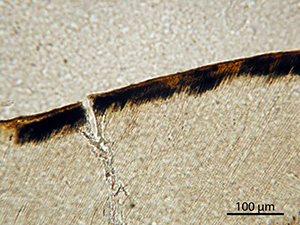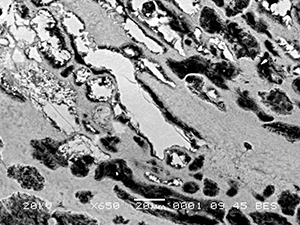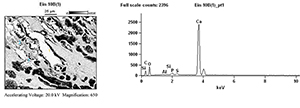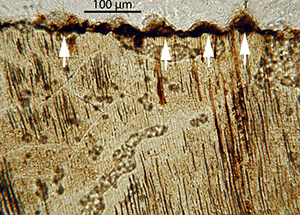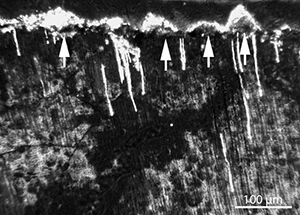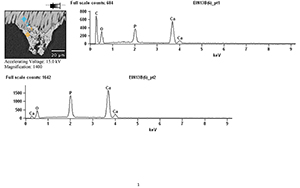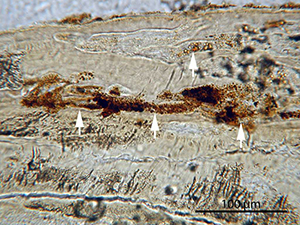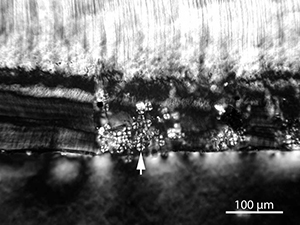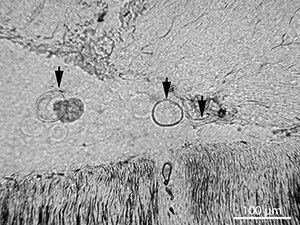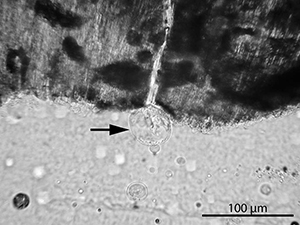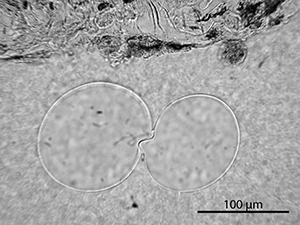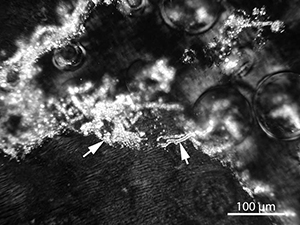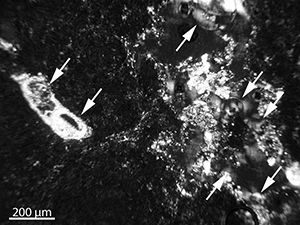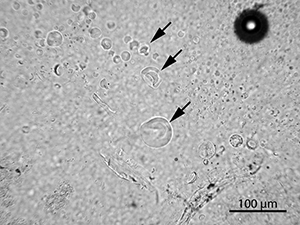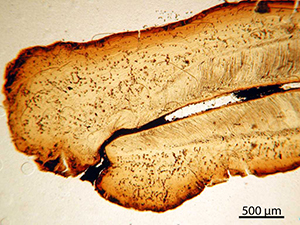
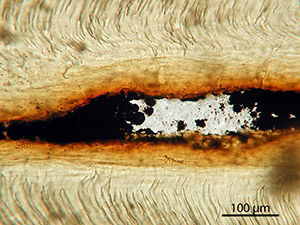
Figure 25: Micrograph of ZWO-01. Detail of the same tooth as shown in Figure 24. This human tooth contained many framboidal pyrite (FeS2) grains on the surface of the pulp cavity and root canals, in places almost completely filling the root canals. The cementum and dentine of this tooth is stained yellow and orange indicating infiltration by iron compounds, possibly a result of partial oxidation of pyrite (see discussion in Hollund et al. 2012b). (Image credit: H. Hollund)
